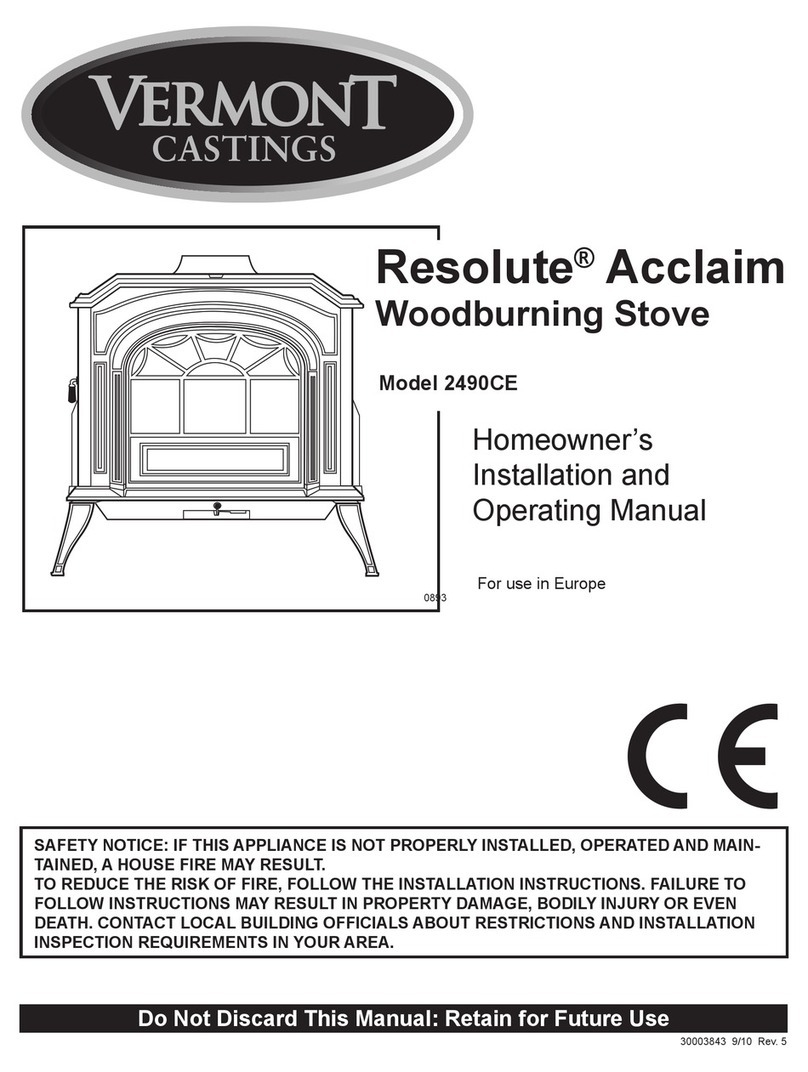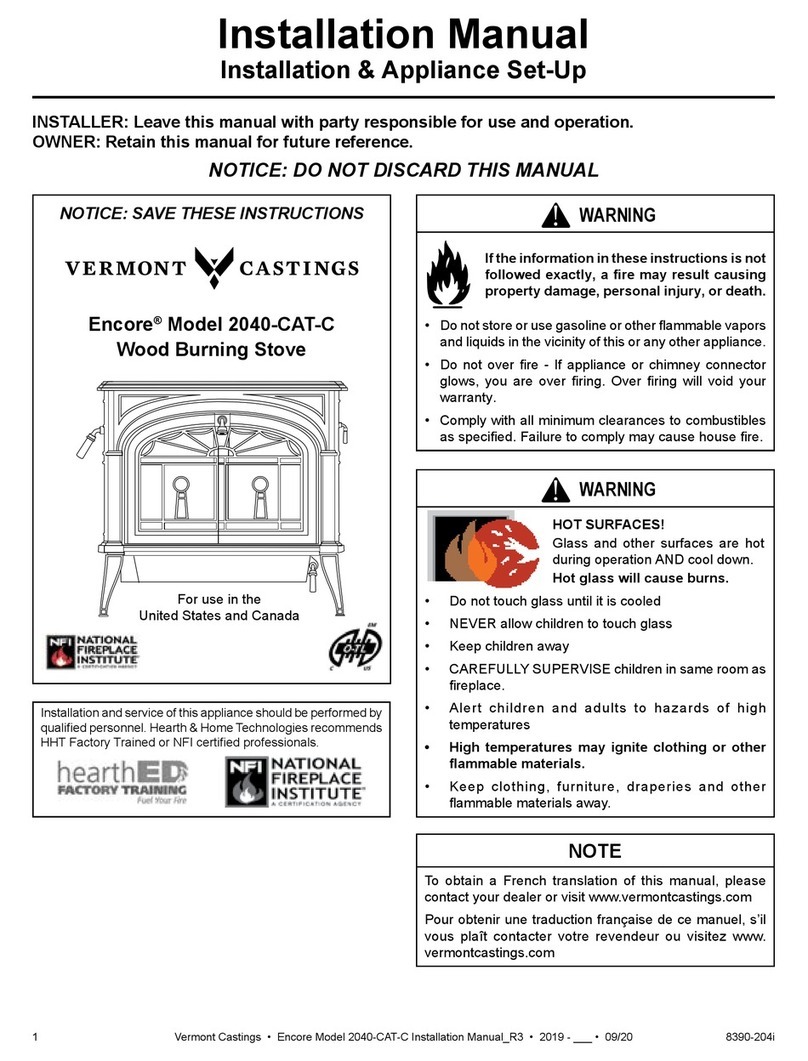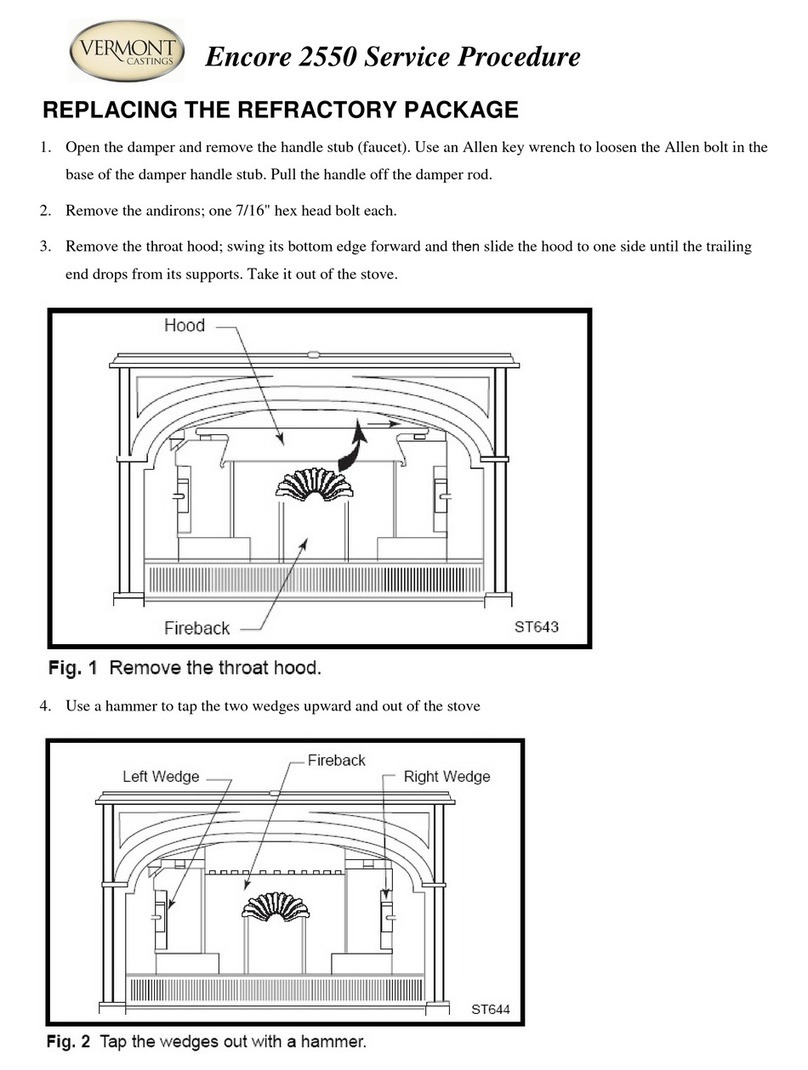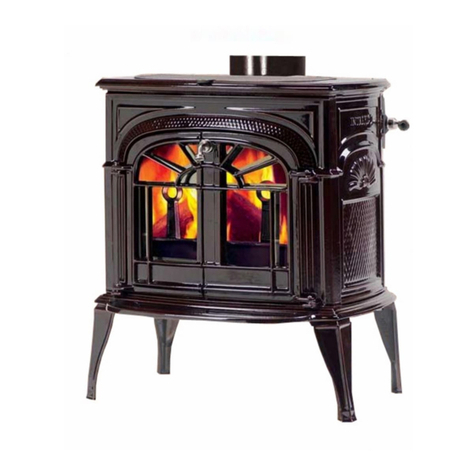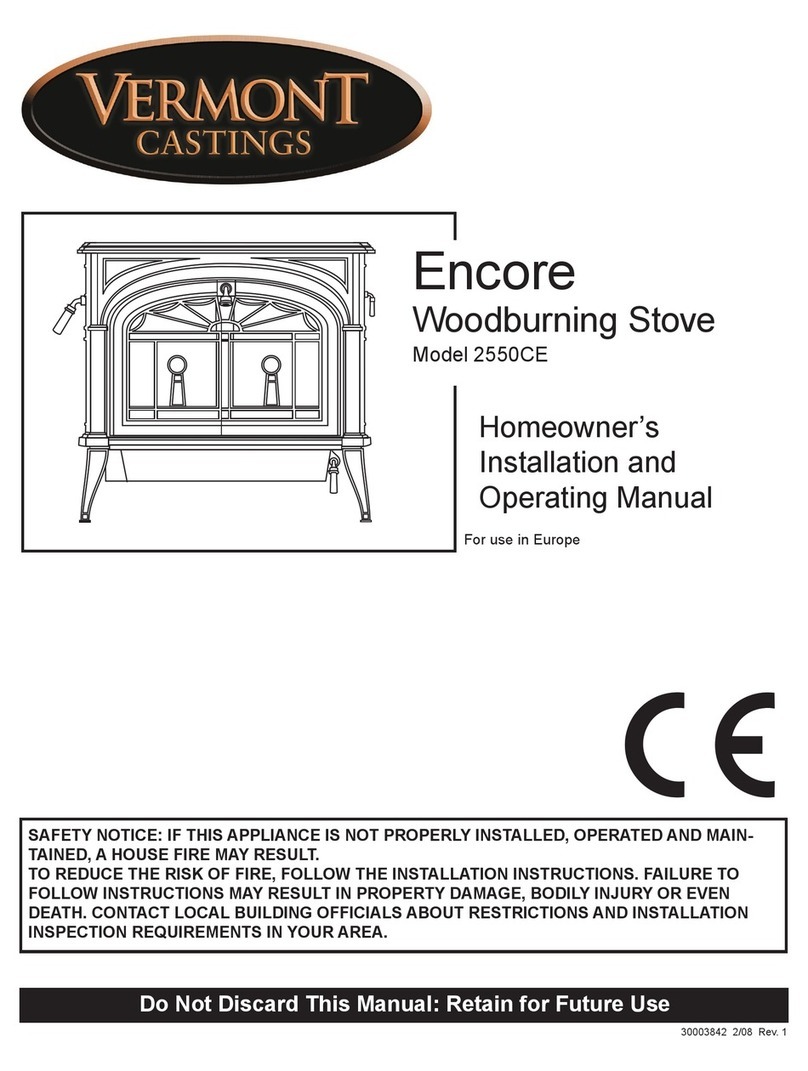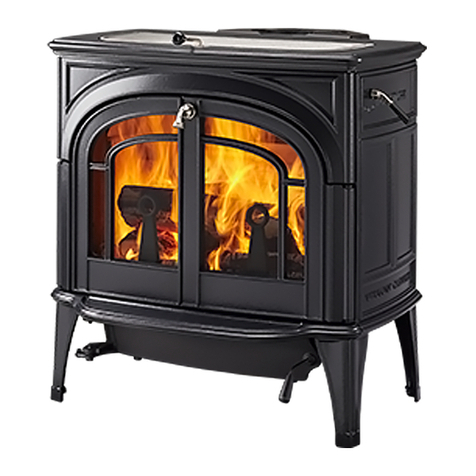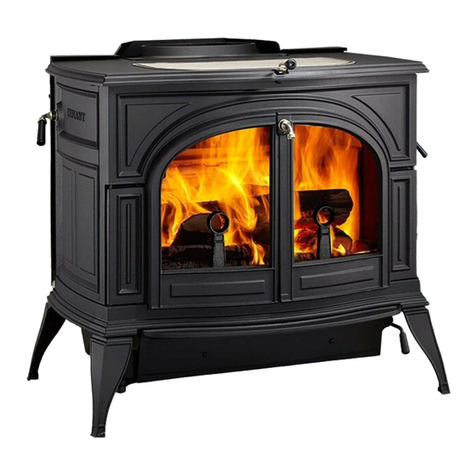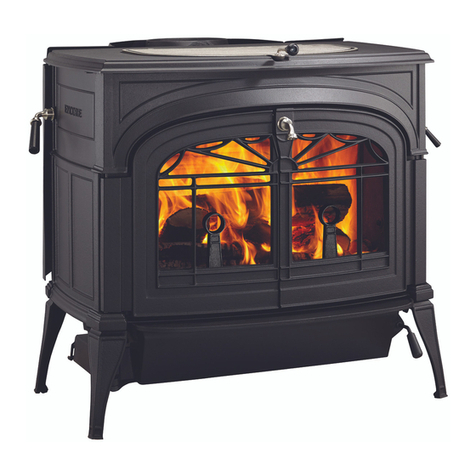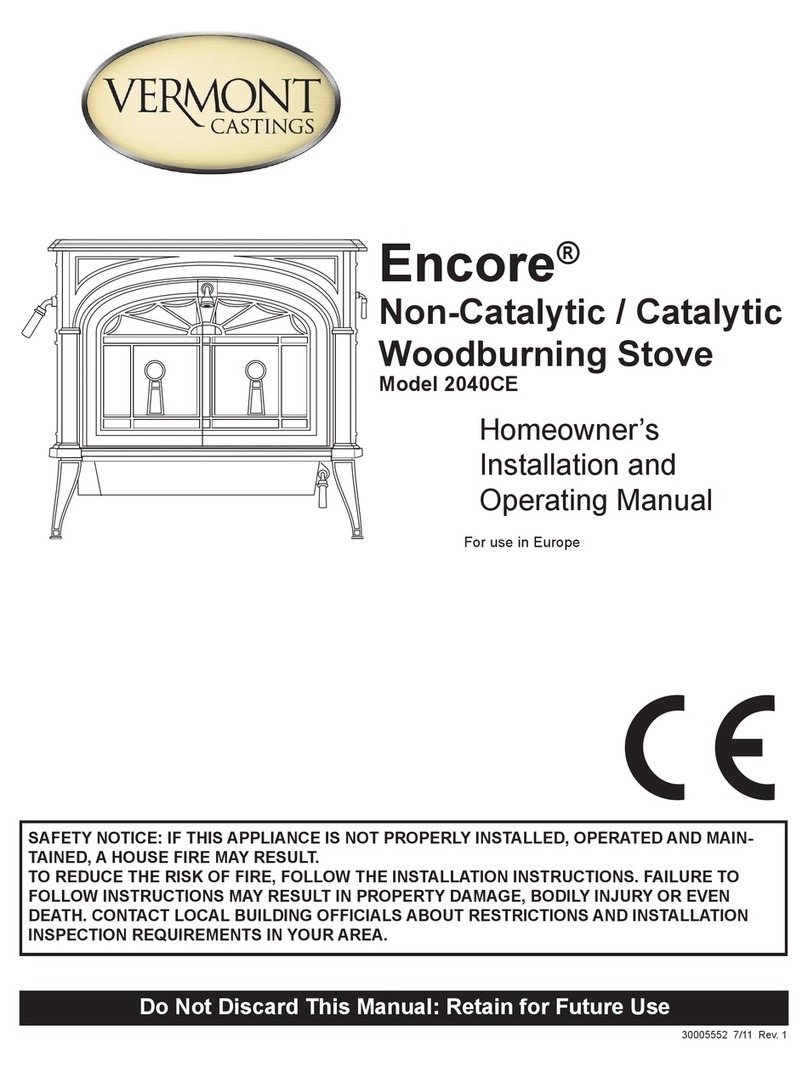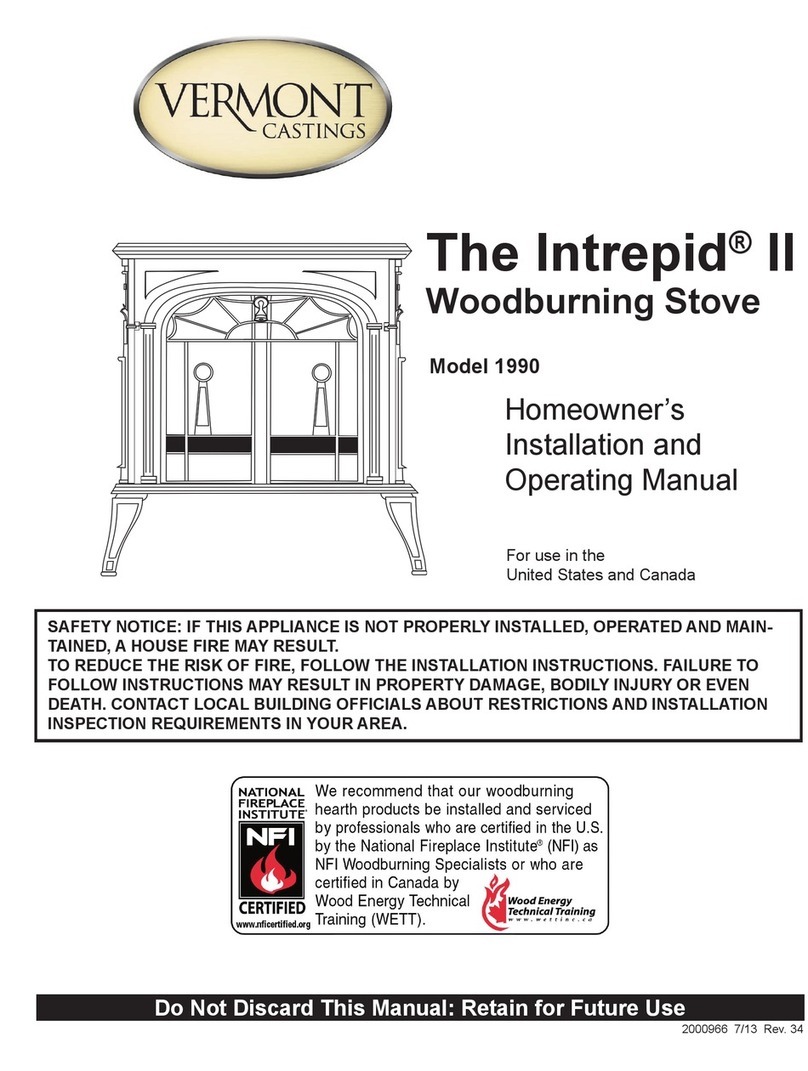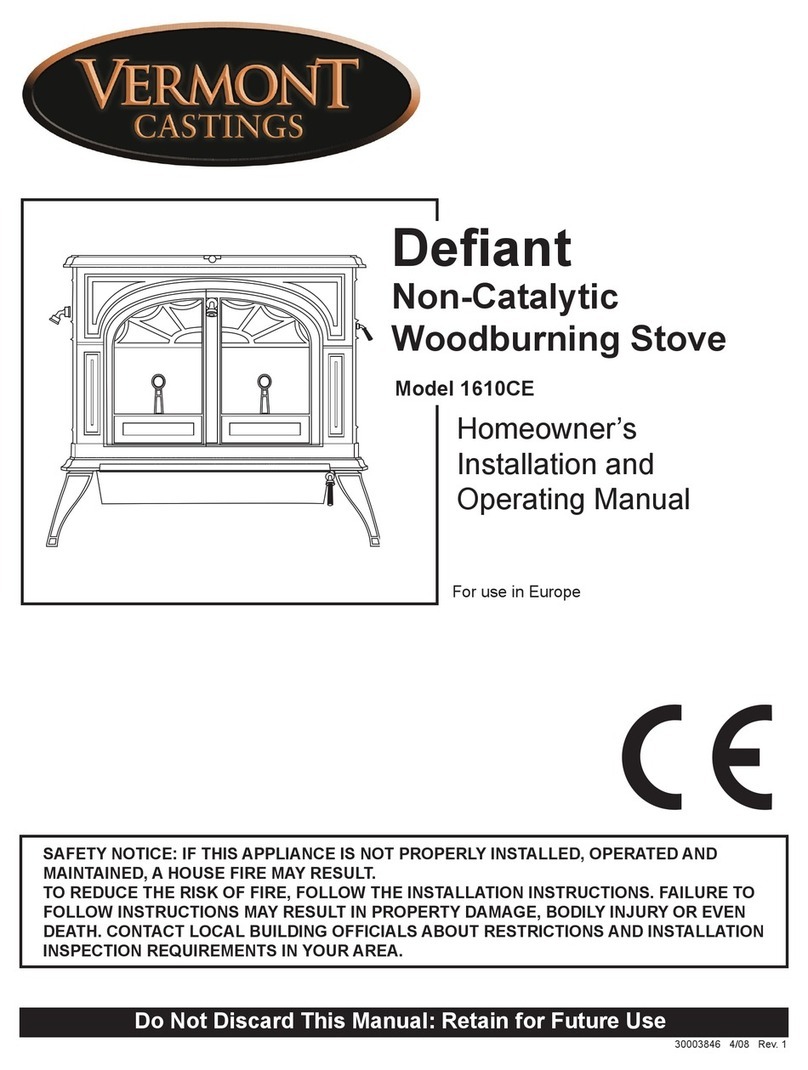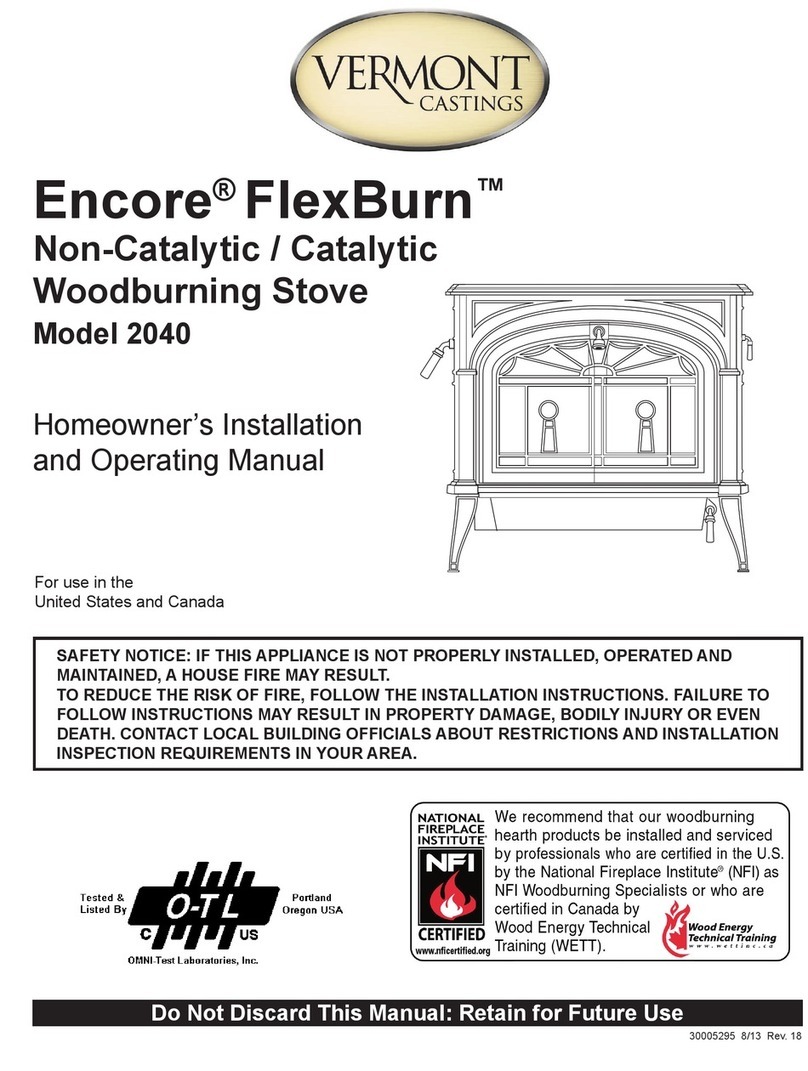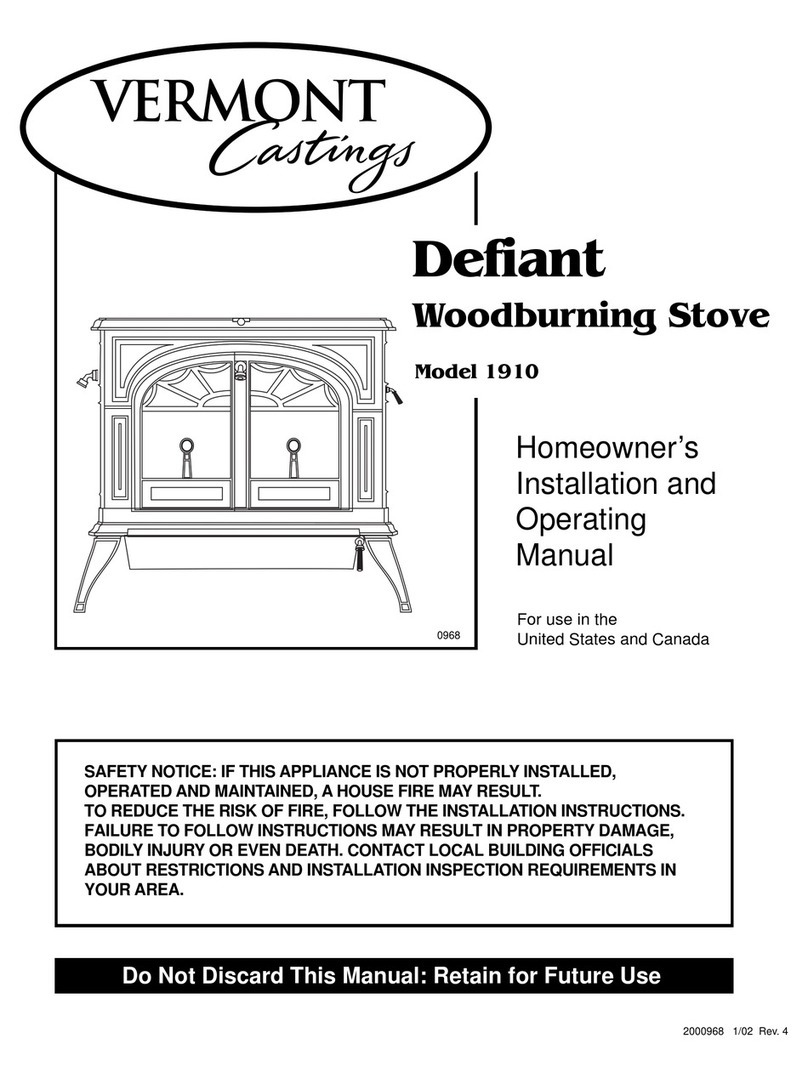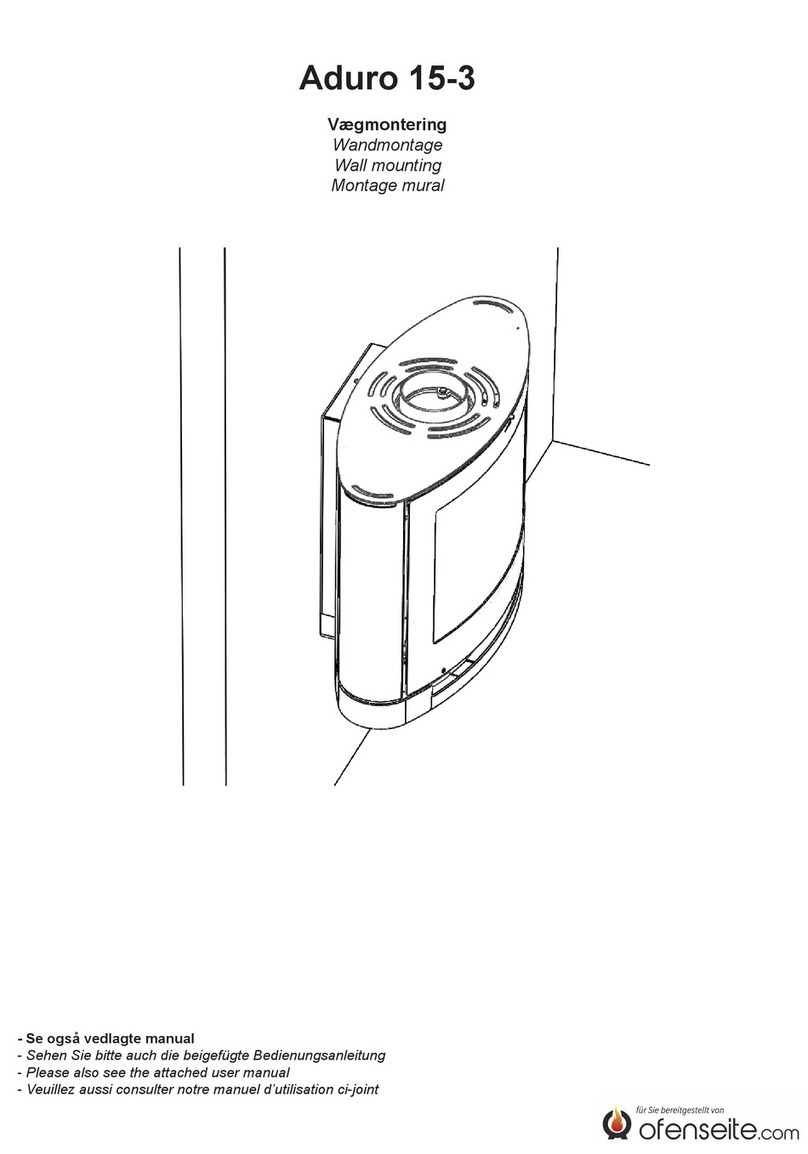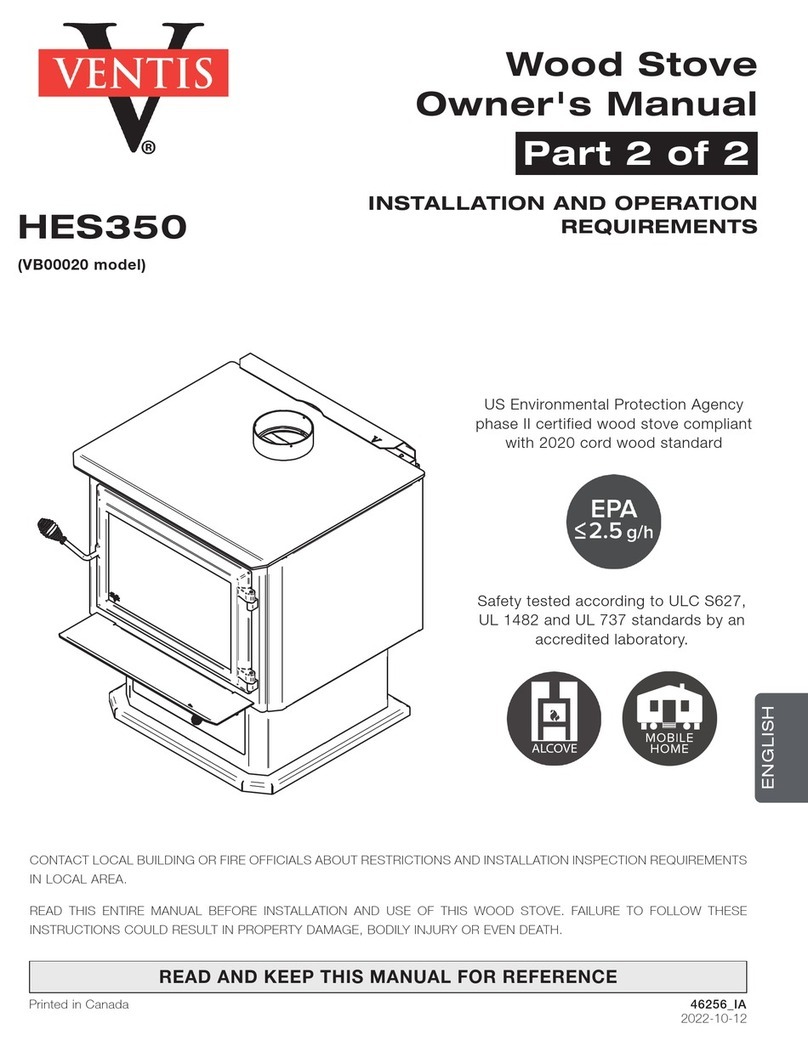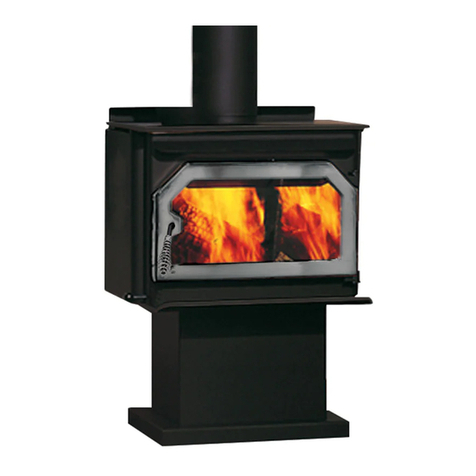
10 04/237101-803R
D. Combustible/Non-combustible Materials
• Combustible Material
Material made of or surfaced with wood, compressed
plastered or non-plastered.
• Non-combustible Material
Material which will not ignite and burn. Such materials
are those consisting entirely of steel, iron, brick, tile,
slate, glass or plasters, or any combination thereof.
• Non-combustible Sealant Material
RTV106 or GE RTB116 (or equivalent).
E. Seasoned Wood
Burn only dry seasoned wood. Store wood under cover,
out of the rain and snow. Dry and well-seasoned wood will
not only minimize the chance of creosote formation, but will
least 15% moisture by weight, and should be burned hot
enough to keep the chimney hot for as long as it takes to
dry the wood out - about one hour. It is a waste of energy to
burn unseasoned wood of any kind.
wet, and requires full seasoning time. Standing dead wood
can be considered to be about 2/3 seasoned. To tell if wood
is dry enough to burn, check the ends of the logs. If there
are cracks radiating in all directions from the center, it is dry.
dry, it may not be fully cured.
Splitting wood before it is stored reduces drying time.
are exposed to air, since more drying occurs through the
cut ends than the sides. This is true even with wood that
has been split. Store wood under cover, such as in a shed,
or covered with a tarp, plastic, tar paper, sheets of scrap
plywood, etc., as uncovered wood can absorb water from
rain or snow, delaying the seasoning process.
•
• Deteriorated refractory brick retainers
• Deteriorated b
2. What To Do if Your Stove is Over-Firing
- Immediately close the door and air controls to reduce
and evacuate your house.
- Contact your local chimney professional and have
your stove and stove pipe inspected for any damage.
- Do not use your stove until the chimney professional
informs you it is safe to do so.
F. Burning Process
In recent years there has been an increasing concern
about air quality. Much of the blame for poor air quality
has been placed on the burning of wood for home heating.
In order to improve the situation, we at Vermont Castings
have developed cleaner-burning wood appliances that
surpass the requirements for emissions established by
our governing agencies. These wood appliances must be
properly operated in order to ensure that they perform the
way they are designed to perform.
1. Kindling or First Stage
It helps to know a little about the actual process of
burning in order to understand what goes on inside
kindling stage. In this stage, the wood is heated to a
temperature high enough to evaporate the moisture
which is present in all wood. The wood will reach the
boiling point of water (212°F) and will not get any hotter
until the water is evaporated. This process takes heat
from the coals and tends to cool the appliance.
Fire requires three things to burn - fuel, air and heat. So,
if heat is robbed from the appliance during the drying
stage, the new load of wood has reduced the chances
for a good clean burn. For this reason, it is always best
dry, you must open the air controls and burn at a high
burn setting for a longer time to start it burning. The
the moisture out of wet, unseasoned wood, resulting in
wasted heat.
2. Second Stage
The next stage of burning, the secondary stage, is
maintained and not allowed to go out. This will ensure
3. Final Stage
burned and only charcoal remains. This is a naturally
clean portion of the burn. The coals burn with hot
It is very important to reload your appliance while
enough lively hot coals remain in order to provide the
amount of heat needed to dry and rekindle the next
load of wood. It is best to activate the start-up air control
before reloading (Figure 11.1). This livens up the coal
bed and reduces excessive emissions (opacity/smoke).
appliance through opening. You should also break up
any large chunks and distribute the coals so that the
new wood is laid on hot coals.
NOTICE: Improper operation can turn any wood
appliance into a smoldering environmental hazard.
